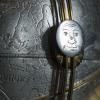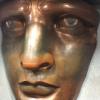Machinery consist in an rotary tool or even a just a drill , which you can jury rig to a vice, even a proper suppor will cost few Euros.
For the rest I don't agree with using abrasives, which remove more material which can never be put back. Of course, if at the end of the process one finds that polishing compound works better when applied by hand, that is fine, but so far I've achieved the best results with small felt wheels, some are knife shape, etc.. Cousins has a lot of these.
The supposed damage to sharp edges is a vastly exaggerated issue, for one not all cases have sharp edges, or damage near to the edges. I've successfully repaired or refinished tens of case, and some were badly damaged. Of course as in everything which involves manual skills, one has to use judgement and control of the technique.



